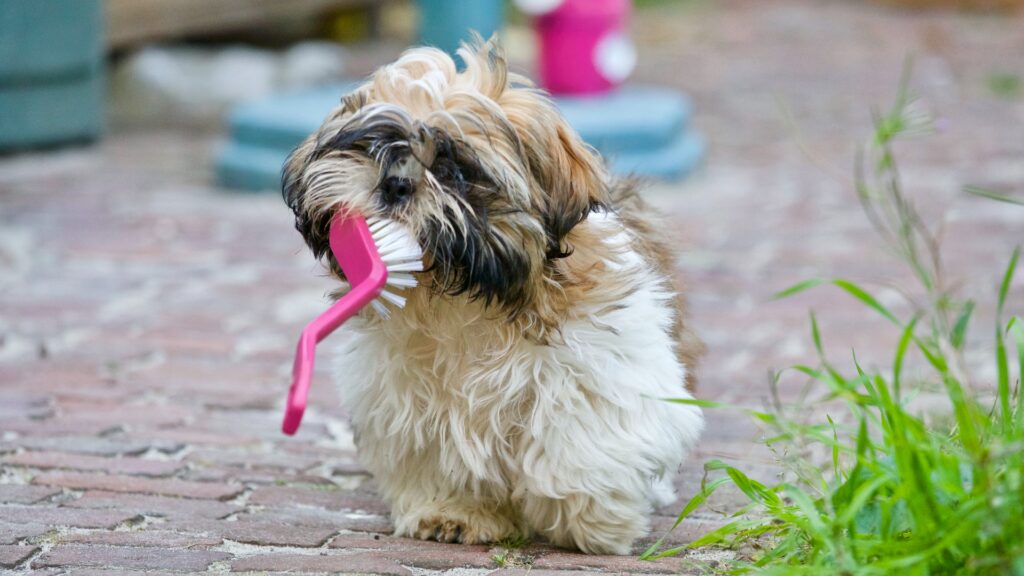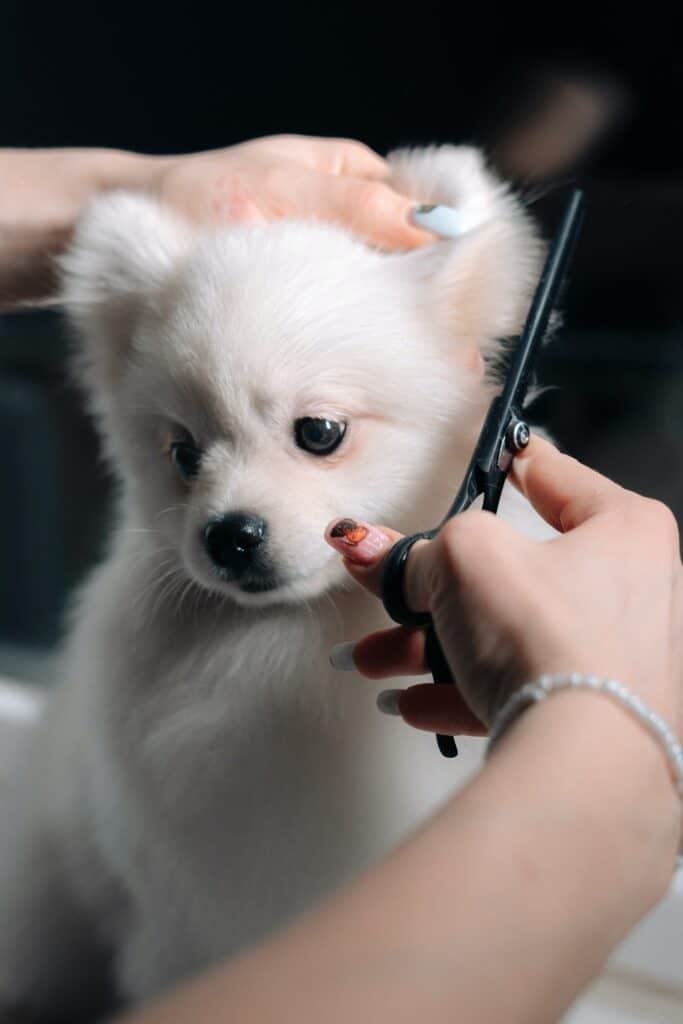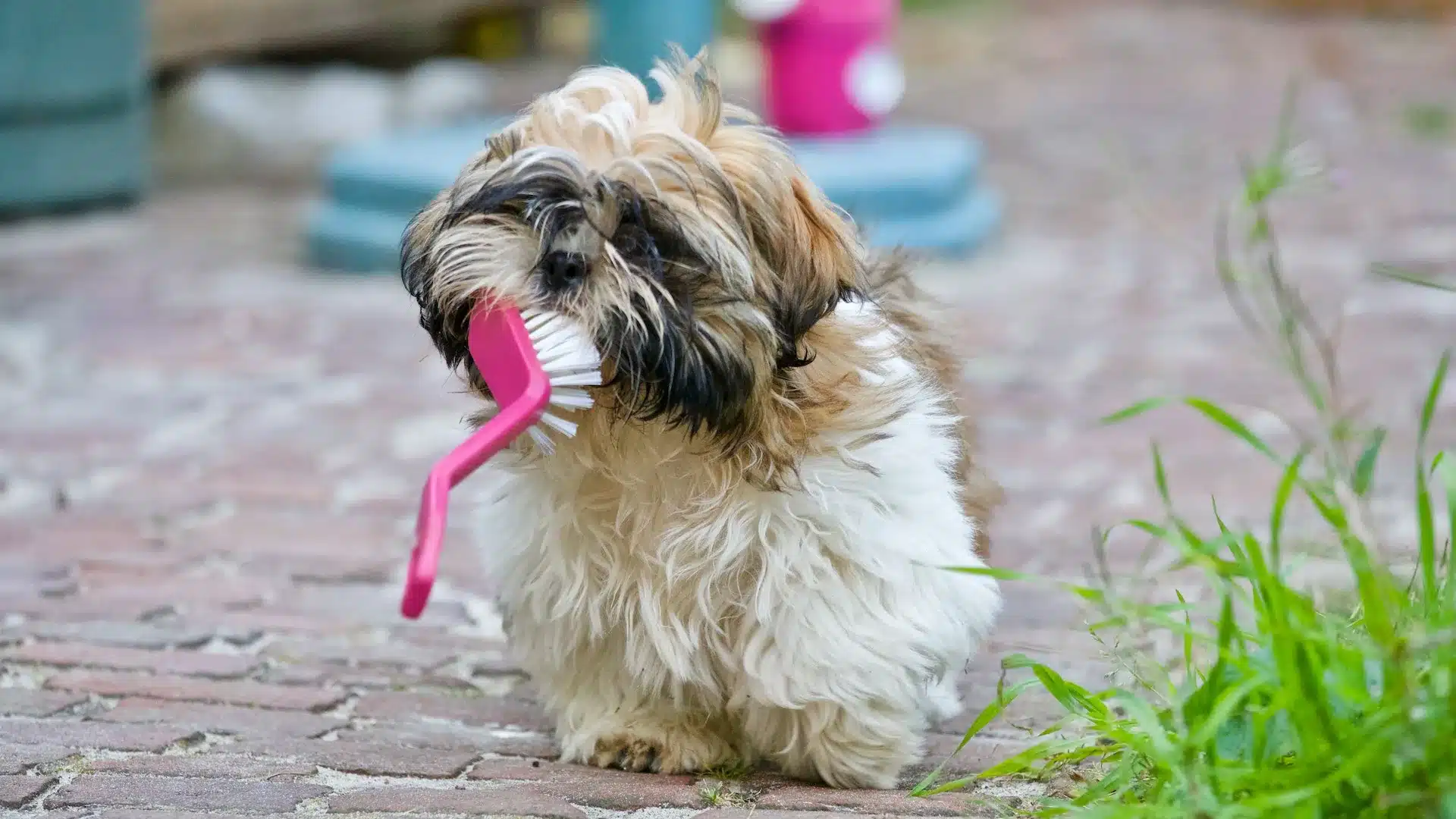When it comes to sedating dogs for grooming, most people fall into one of two categories. Some people believe it’s not a big deal and that we should always sedate animals whenever we need to do something that bothers them. Drugging a dog to help them get through a terrifying situation makes the other people extremely nervous.
Somewhere between these two extremes is a happy medium. When our dogs don’t realize that we’re trying to help them, sedation and tranquilization are tools we can use to keep them from experiencing extreme fear. However, it shouldn’t be the simple solution to carrying out regular maintenance tasks like grooming.
Every time a drug is administered to an animal, there are risks involved. The fact that drugs today are much safer than those even used 20 to 30 years ago is a blessing. We shouldn’t be hasty when administering modern medications to dogs, even though they can be secure when used properly.
If it prevents the dog from experiencing extreme anxiety and fear, it is acceptable to sedate the dog for grooming. Sédation can protect both the dog and the person grooming him from harm. However, it might be unethical to sedate a dog for grooming without also using other methods to help the animal become accustomed to the situation.
Table of Contents
You may be interested: Are bears related to dogs? Why do bears look like dogs

Why Your Dog Hates Getting Groomed
Not every dog despises getting groomed. Some dogs view it as a playful means of attracting attention. Some people find bathing, brushing, and nail trimming to be very upsetting and confusing. common causes for dog grooming repulsion:
- Close contact between humans and dogs is necessary for grooming.
- It frequently happens in busy areas where there are many other dogs.
- A lot of dogs are scared of strangers.
- Your dog might not be accustomed to having so much handling.
Even when you groom your dog at home, there’s a chance that your pet won’t understand what you’re doing and end up scared. Grooming your dog might also hurt, depending on their coat. Dogs with long hair that is matted and tangled already experience pain from the mats pulling on their skin. When someone starts brushing the fur, the pain becomes even worse.
Finally, many dogs find it upsetting when their nails are cut during routine grooming. Because a dog’s feet are so delicate, even gentle handling can be painful. It’s possible that your dog has gone through painful and unsettling nail trimming at some point in his life. Your dog might associate having his nails cut with any type of pet grooming and become upset before you even attempt to trim his nails.
When Can You Sedate Dog For Grooming
You must sedate Dog For Grooming in order for its health. If your dog’s groomer has recommended sedation for grooming, a veterinarian should be present to oversee the procedure. Many veterinary clinics have a dog groomer on staff. The level of anxiety and health of your dog determines the type of sedation used. Before you take your dog to the groomer, your vet may advise giving him an oral sedative at home.
The vet at the clinic may need to administer injectable sedatives to dogs who are so anxious that they risk hurting themselves or the groomers. If your dog requires full anesthesia or heavy sedation, he will be closely watched to ensure his safety. The veterinarian will be present in the same building to offer assistance if there are any problems with the sedative.
It’s dangerous to sedate your dog at a grooming shop without a vet on site. Inadvertent reactions in dogs can result from even mild tranquilizers. A dog grooming parlor lacks the medical supplies and personnel required to assist your dog. Dog sedation usually goes very smoothly, but in a small number of complicated cases, your dog may need the assistance of a medical professional.
Is it safe to sedate a dog for grooming?
If it prevents the dog from experiencing extreme anxiety and fear, it is acceptable to sedate the dog for grooming. Sédation can protect both the dog and the person grooming him from harm. However, it might be unethical to sedate an animal for restraint without also using other methods to help the animal become accustomed to the situation.

What can I use to sedate my dog for grooming
Not every dog needs to be sedated deeply in order to be properly groomed. When determining the type of sedation to administer for grooming, veterinarians consider the behavior and level of anxiety of the dog.
Oral Relaxants for Minor Anxiety
If a dog’s anxiety is limited to shaking, hiding, and trembling during grooming, taking an oral tranquilizer at home before going to the salon may be fine. Compared to injectable or inhalant sedatives, oral tranquilizers have a lower level of predictability. Your dog won’t take the medication and get groomed before you can determine his precise reaction. Most veterinarians will begin with a lower dose than they believe your dog needs and increase it as needed. For dogs, the most frequently prescribed sedatives/tranquilizers by mouth are:
- Acepromazine
- Alprazolam
- Gabapentin
- Trazodone
Can you sedate a dog for grooming
Contrary to what you may read online, most veterinarians do not advise Benadryl for sedating a dog so it can be groomed. This antihistamine probably won’t have much of a sedative effect on a nervous dog. In conclusion, NO, Benadryl cannot be used to sedate a dog.
Utilizing Injectable Sedatives to Calm Anxious Dogs
Oral sedatives are not very effective at calming a dog once its anxiety level reaches its peak. When being groomed, I’ve observed dogs who have received relatively high doses of oral sedatives still trying to bite and thrash around. They are then heavily sedated and sleep for four hours as soon as they get home and the stressful situation is over. That is not the best scenario at all!
An injectable sedative is frequently required for dogs who are extremely anxious about getting groomed. To make your dog’s grooming experience less stressful, your veterinarian will pick an appropriate sedative. This frequently indicates that the dog is extremely sleepy but not completely drugged. The effects of injectable sedatives can last for up to several hours. Veterinarians should keep an eye on sedated dogs until they have fully recovered.
Using general anesthesia when grooming dogs
Very few dogs require complete anesthesia in order to be groomed. Dogs undergoing this type of anesthesia are frequently intubated to ensure proper breathing. They need to be constantly observed by qualified medical personnel. Due to the possibility of low body temperature, bathing a dog while they are fully sedated carries its own risks. In order to lower the risk of hypothermia, I frequently ask the groomer to trim the dogs’ coats without bathing them first.
How Frequently Can a Dog Be Sedated for Grooming?
The majority of healthy dogs can tolerate being sedated orally every four to six months for grooming. But what if your dog needs complete anesthesia? If you keep doing that every few months, it will have an adverse effect on your dog’s health as well as your wallet. Anesthesia and heavy sedation are not easy procedures, and they should be avoided whenever possible. In order to prevent your dog from needing a major medical procedure every time he needs a haircut, it is much preferable to work with him to help him tolerate grooming.
Sedate Dog for Grooming at Home
Clients frequently ask their veterinarian for medication so they can groom their dog at home. Although I agree that grooming a dog at home is less stressful, I don’t believe it is safe to sedate your dog there. If your dog needs more than a little sedation, it should be administered in a veterinary clinic with all the necessary tools, under the direction of a veterinarian. To make at-home grooming easier, you can ask your veterinarian if your dog is healthy enough to take a mild oral tranquilizer like acepromazine. However, using any medication to actually sedate your dog at home is risky and should be avoided. NEVER DO IT!
I’m not trying to scare you with this or using exaggeration. I’ve seen countless instances where tranquilized dogs experienced unexpected side effects and might have perished if there hadn’t been a veterinarian nearby. Don’t let your dog experience this. Even if you give your dog a mild oral tranquilizer, he might still become extremely upset during grooming. Be careful not to push him past his comfort level as you move slowly. Allow the oral tranquilizer to wear off before speaking to your veterinarian about the best course of action if you discover that it is not strong enough for you to groom your dog.
Over-the-Counter Dog Calming Medicine
I now want to address the suggestion that Benadryl be used as a sedative for dog grooming, which I have seen all over the internet. At best, Benadryl makes dogs who are already calm more relaxed and drowsy. As an antihistamine, Benadryl is typically safe for dogs, but if given in excess, it could be fatal. Benadryl is not a suitable tranquilizer or sedative for dogs. Other risky recommendations include using over-the-counter or human-prescribed medications for colds. When people gave their dogs sedatives or cold medications prescribed for humans, I’ve seen fatal results.
I’ll never forget the poor dog who received excessive cold medication in an effort to calm him down. He was brought to the clinic in critical condition and on liver failure medication. Please don’t waste your time or put your dog in danger by attempting to tranquilize him with human medication or over-the-counter tranquilizers. Get assistance from a veterinarian so that your dog can be properly groomed the first time and avoid having to endure stressful grooming sessions repeatedly.
Natural Sedatives for Dogs
The use of natural sedatives is the subject of numerous internet rumors. The list of topics discussed includes valerian root, passion flower, Rescue Remedy, essential oils, and much more. These are, at best, mild tranquilizers that might help a dog unwind a little in unnerving circumstances. A natural sedative might, at worst, harm internal organs. A substance is not necessarily completely non-toxic just because it is natural. The majority of these herbal tranquilizers have not been studied and are not permitted for use in dogs.
I’ve never observed a dog that is normally terrified of grooming being sufficiently sedated by a natural substance to allow for grooming. To achieve any level of actual sedation, you would likely need to administer a toxic dose of the majority of natural substances. Do not attempt this, please! Dogs can be sedated in safe ways. Don’t endanger the life of your dog.
Cost of Dog Sedation
You might worry about how much it will cost to sedate your dog for grooming. The price of oral sedation will include a vet visit and the inexpensive pills. You’ll probably spend less than $100. (not including the grooming fees). Depending on where you live, the cost of injectable sedation for your dog could range from $100 to $200. Depending on where you live, how long the procedure lasts, and the cost of your region, full anesthesia may cost $300 to $500 or even more. Your vet might also demand diagnostic testing before anesthesia if your dog is older or has certain medical conditions.
Prepare Your Dog for Grooming and Nail Clipping
Training your dog to accept grooming without sedation is the best way to prevent having to sedate him every 4 to 8 weeks. Desensitization and counterconditioning are two training methods I advise. Desensitization is the process of progressively increasing a dog’s tolerance for the feared event. Counterconditioning entails gradually teaching the dog to link a positive experience, such as a high-value treat, with the feared event. You must watch that grooming doesn’t hurt the dog and that you don’t push him past his comfort level with fear in order to achieve this.
It does indeed take time. The kindest thing you can do as a dog owner for your fearful dog is this. Engage the assistance of a dog trainer who employs positive reinforcement so they can demonstrate the proper procedure for you. It’s critical that you know when to praise behavior appropriately and when to end a grooming session. Find a qualified groomer who is prepared to use the same training techniques as well. Ask if you can stay to watch the initial grooming procedure. You can ensure that the groomer is aware of the training procedure while also getting some advice from them.
While you use training to reduce their anxiety, keep using whatever dosage of medication is necessary to keep the dog calm during routine grooming. Each negative grooming encounter your dog has will make it more challenging the following time. It’s crucial to keep your dog’s anxiety and fear levels low while grooming!
Conclusion of sedate dog for grooming:
- For dogs who have mild grooming anxiety, oral tranquilizers may be helpful, but this should only be done with a veterinarian’s supervision.
- A dog should only be sedated for grooming purposes under the close supervision of a veterinarian.
- Training in counterconditioning and desensitization can help a dog accept grooming with little to no sedation or tranquilizer use.
References: mspca.org , bondvet.


